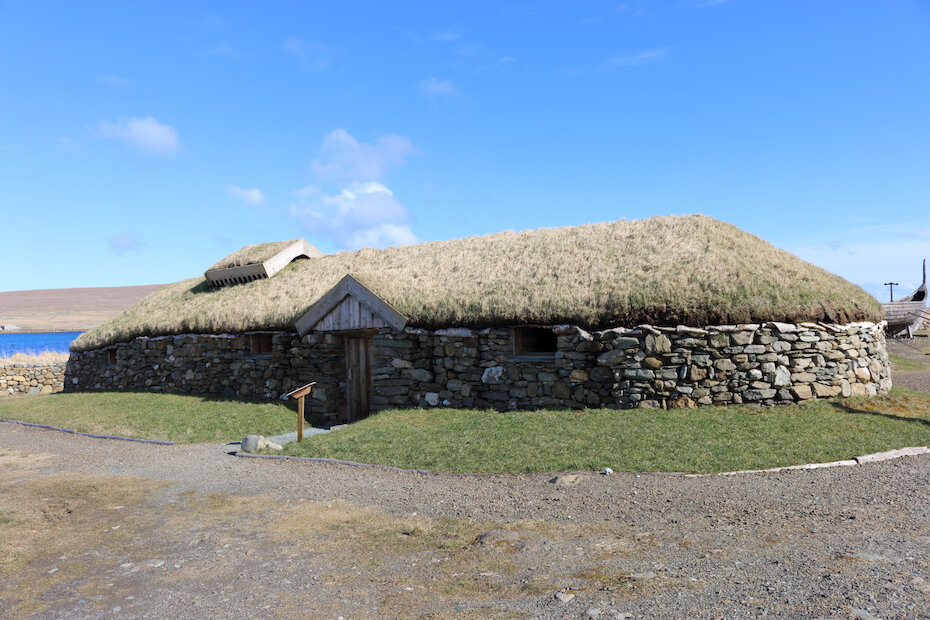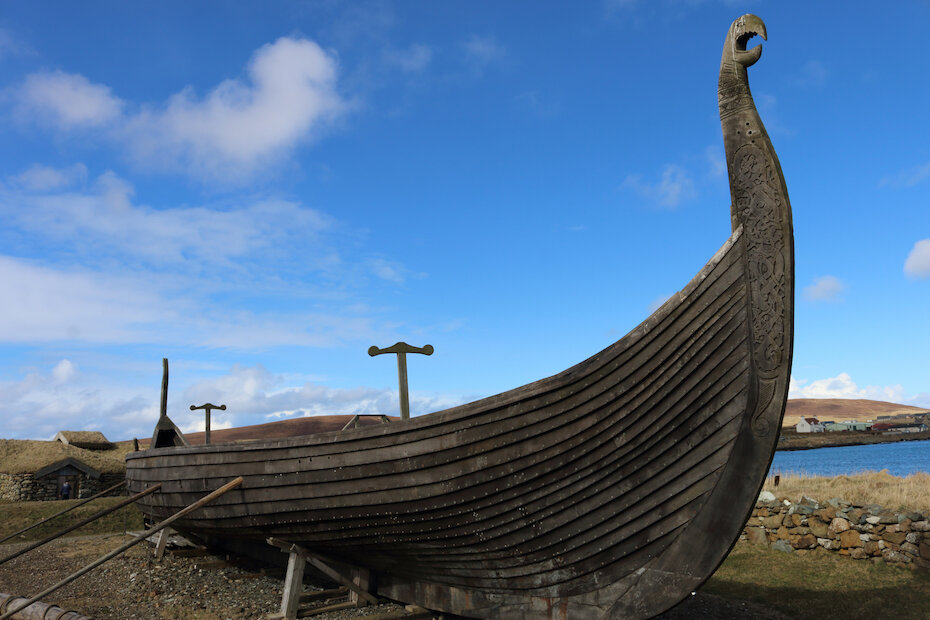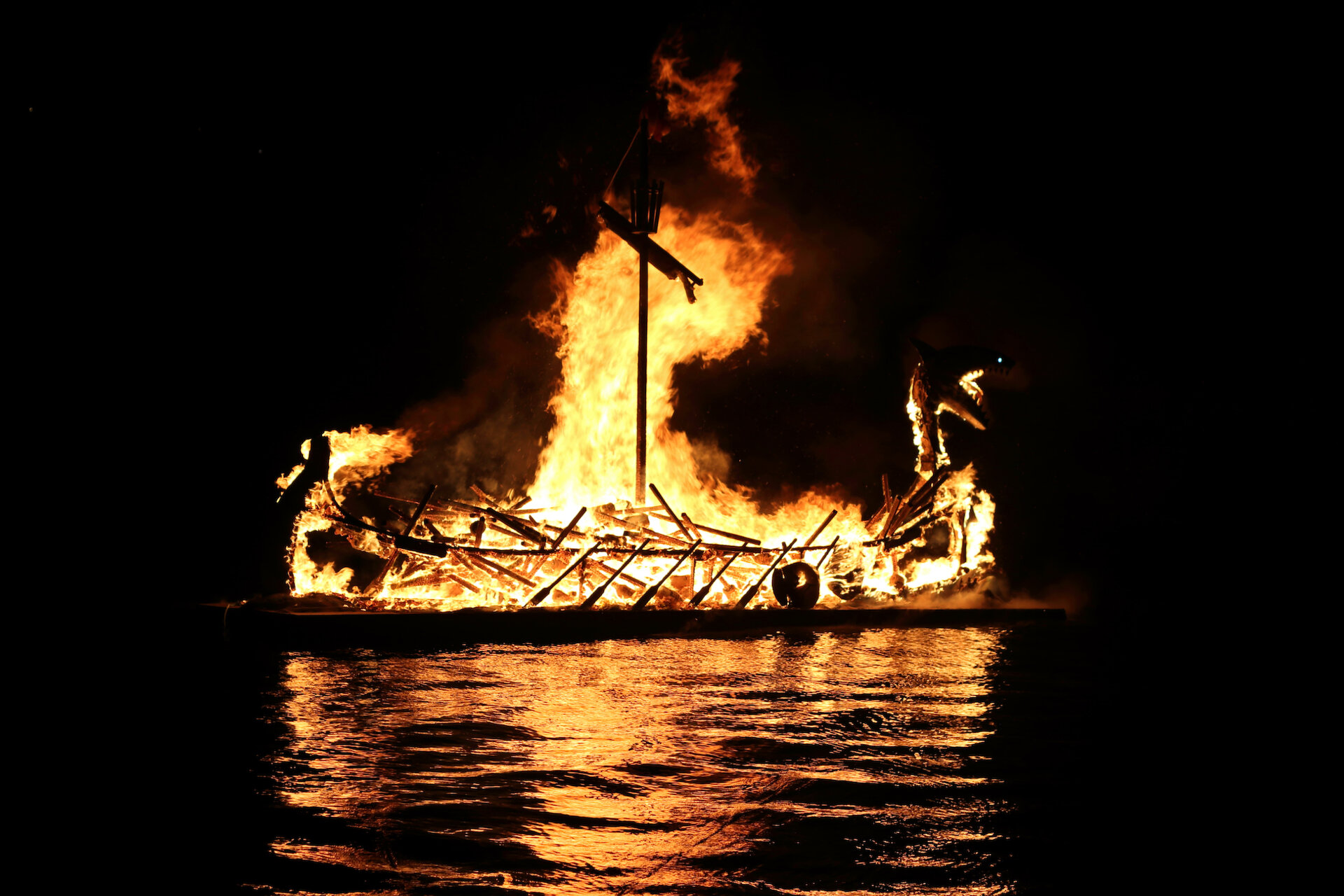Shetland was once part of the wider Viking world and many of the Norse influences can still be observed in Shetland today, mostly in the place-names that were left behind. The language of the Norse settlers was called Norn, a form of Old Norse, which was spoken in Shetland until about 300 years ago. The last person believed to have spoken the language was a woman called Jeannie Ratter who died in 1926.
Old Norse was spoken across the Scandinavian world and the closest surviving language to Old Norse is found today in Iceland. This language was well-documented in Shetland by Faeroese scholar, Jakob Jakobsen, who came to Shetland at the end of the 19th century and recorded all the Norn words he heard spoken. He compiled these into a two-volume dictionary of Shetland language, which remains the greatest work on the dialect ever undertaken. Today, many of the dialect words still in use have their roots in the Old Norse language that was spoken here at one time.



